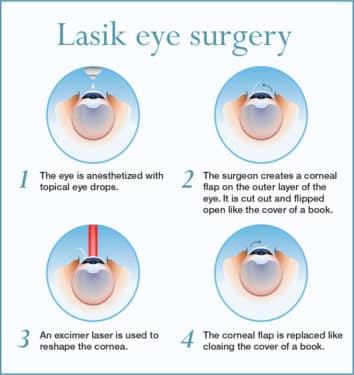What Are The Distinctions And Resemblances Between SMILE Eye Surgical Procedure And LASIK And PRK?
What Are The Distinctions And Resemblances Between SMILE Eye Surgical Procedure And LASIK And PRK?
Blog Article
Web Content Author-McElroy Waller
If you have actually been taking into consideration SMILE eye surgical procedure, you could ask yourself just how it stacks up against LASIK and PRK. Each treatment has its very own set of benefits and factors to consider. From quicker recuperation times to possible threats, there are crucial differences you should recognize before choosing. Recognizing these differences will certainly aid you make an enlightened option that lines up with your certain demands and expectations. Interested to recognize even more regarding exactly how these procedures contrast thoroughly? Continue checking out to get a thorough understanding of SMILE, LASIK, and PRK.
SMILE Eye Surgical Treatment Summary
If you're taking into consideration SMILE eye surgical treatment, you'll find it to be a minimally intrusive procedure with a quick recovery time. Throughout SMILE (Small Cut Lenticule Extraction), a laser is utilized to create a little, specific incision in the cornea to remove a small item of tissue, improving it to correct your vision. This differs from LASIK, where a flap is produced, and PRK, where the outer layer of the cornea is completely gotten rid of.
One of the key benefits of SMILE is its minimally invasive nature, causing a faster healing process and less pain post-surgery. your input here for SMILE is reasonably fast, with many patients experiencing boosted vision within a day or two. This makes it a popular option for those looking for a convenient and reliable vision adjustment procedure. Furthermore, SMILE has been shown to have a reduced threat of dry eye disorder compared to LASIK, making it a desirable alternative for people worried concerning this possible adverse effects.
Differences Between SMILE, LASIK, and PRK
When comparing SMILE, LASIK, and PRK eye surgical procedures, it is essential to recognize the distinct strategies utilized in each procedure for vision adjustment.
how cataract surgery works (Small Incision Lenticule Removal) is a minimally intrusive procedure that involves developing a tiny cut to extract a lenticule from the cornea, improving it to deal with vision.
LASIK (Laser-Assisted Sitting Keratomileusis) involves creating a slim flap on the cornea, making use of a laser to reshape the underlying tissue, and afterwards rearranging the flap.
PRK (Photorefractive Keratectomy) removes the outer layer of the cornea before improving the tissue with a laser.
The primary difference hinges on the way the cornea is accessed and dealt with. SMILE is flapless, making it a great choice for people with slim corneas or those involved in get in touch with sports. LASIK provides fast aesthetic healing due to the flap creation, however it might position a greater risk of flap-related difficulties. PRK, although having a longer recuperation period, stays clear of flap-related issues entirely.
Recognizing these variations is critical in selecting one of the most suitable procedure for your vision improvement requirements.
Pros and Cons Contrast
To assess the benefits and disadvantages of SMILE, LASIK, and PRK eye surgical procedures, it's vital to think about the details advantages and possible restrictions of each treatment. SMILE surgical procedure supplies the advantage of a minimally intrusive treatment, with a smaller sized cut and possibly quicker healing time contrasted to LASIK and PRK. It also reduces the danger of dry eye post-surgery, a typical negative effects of LASIK. Nonetheless, How Much For LASIK may have restrictions in treating higher levels of nearsightedness or astigmatism contrasted to LASIK.
LASIK surgical procedure supplies quick visual recovery and marginal discomfort during the treatment. It's highly efficient in treating a large range of refractive mistakes, including nearsightedness, hyperopia, and astigmatism. Yet, LASIK brings a risk of flap complications, which can influence the corneal structure.
PRK eye surgical treatment, while not as popular as LASIK, prevents producing a corneal flap, lowering the threat of flap-related complications. It's suitable for patients with slim corneas or irregular corneal surface areas. However, PRK has a much longer healing time and might entail more discomfort throughout the recovery procedure.
Verdict
So, when it comes to picking between SMILE, LASIK, and PRK, consider it like picking the best set of footwear. SMILE is like a sleek, comfy pair of sneakers - fast and easy.
LASIK is a lot more like trendy high heels - fancy and fast, however with some prospective risks.
PRK resembles sturdy treking boots - reliable and long lasting, yet requiring a bit more effort and time.
Ultimately, https://www.webmd.com/eye-health/cataracts/intraocular-lens-implant depends on your private demands and choices.
